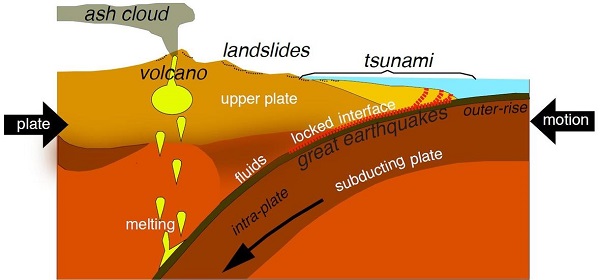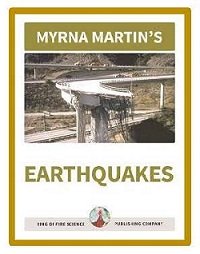What is a Convergent Boundary?
Three types of tectonic plate boundaries
Convergent boundary, divergent boundary and transform boundary are the three types of boundaries that form due to plate tectonic movement. Converging plates usually form subduction zones. Subduction zones ring the Pacific Plate causing frequent earthquakes, volcanic eruptions, and tsunamis.

Subduction zone USGS
Subduction zones
Convergent boundaries
Subduction zones form when a continental plate is colliding with an oceanic plate. Subduction zones also form when two oceanic plates collide. The continental crust is lighter because of the quartz and feldspar minerals in granite. Iron and magnesium are much heavier minerals found in ocean floor basalt.
Which plate subducts?
When the two plates meet the oceanic crustal plate always subducts beneath the continental plate. The subducting oceanic plate bends and plunges beneath the lighter continental plate until it melts. When two oceanic plates meet and form a subduction zone the heavier and denser of two oceanic plates subducts.


Click for More Information and to Order
Collision boundaries of continental plates
Two continental plates converge
Continental crusts that collide form a convergent boundary also. When two continental crusts collide a large mountain range forms between the two crusts. The Himalayan Mountains are the result of a continental collision between the Indo-Australian Plate and the Eurasian Plate.
Himalayans
The Himalayas is a mountain range that separates the Indian subcontinent and the Tibetan Plateau. These mountains formed when sedimentary and metamorphic rocks were uplifted creating fold mountains as the land was compacted. The collision between these two mountain ranges continues and the Himalayas are still growing.
KIDS FUN Science Bookstore
Check out Myrna Martin's award winning textbooks, e-books, videos and rock sets. The Kids Fun Science Bookstore covers a wide range of earth science topics. Click here to browse.










